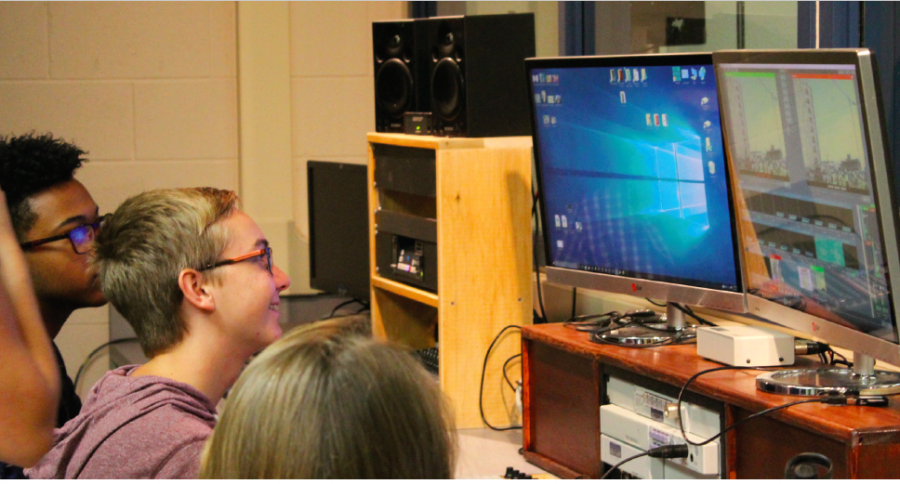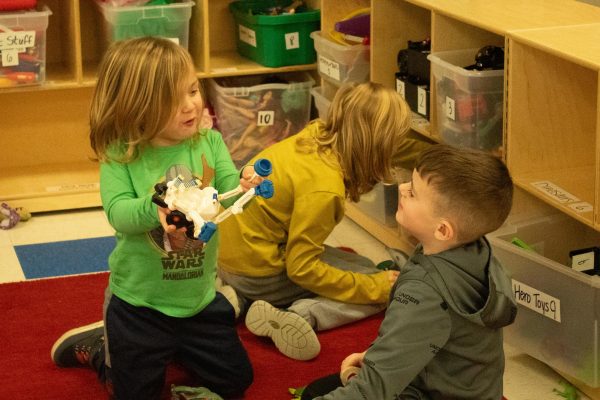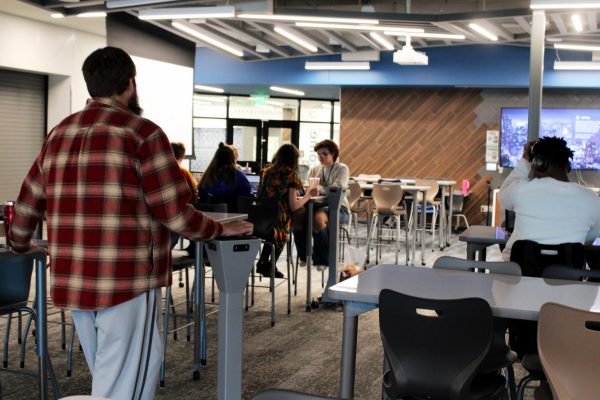Behind the Scenes
“Good afternoon Jays and happy Friday.” The daily broadcast, KLHS, is viewed across the school every day. It is a great way to get the buzz out to students on screen about school activities, but what lies behind the scenes?
“I think the best part of KLHS is the announcements because they are very useful,” freshman John Manuel said. “I enjoy the show because it lets me know what is going on in the school and outside of school. I think the show gets better each week.”
There is more behind KLHS than the
anchors, weather and sports reporters. Like network shows, KLHS has
producers, technical directors and audio editors.
“The producer of the show usually counts us down to intro and outro, like the producer for a movie,” sophomore Danny Johnston said. “Technical directors are mostly in the editing bay to make sure everything is flowing nicely and audio editors make sure that everything sounds good and that all our mics are checked. We also have people who control the cameras to make sure everything looks good and a person who controls the prompter for the anchors reading the script.”
Another behind the scenes job is the camera worker. Unlike what others might think, this job does not carry much pressure due to the easy point and shoot camera.
“The camera is pretty basic,” junior Josie Wilkerson said. “What sets ours apart is the screen in the front of them that we use as a prompter for our anchors. The camera worker just has to make sure that the shot is in place and that they are in focus. Also camera people have the job of letting our anchors know when they start talking when we come back from a feature. We usually just count them down from 10 seconds.”
KLHS students change jobs every two weeks. Just like all jobs, everyone has a preferred task to perform.
“My favorite position is to be on air because I love going through the process of making the show and running through the script,” junior Hannah Sanders said. “Usually we switch out from production to stories and we actually make the stories that you see on the broadcasts. Sometimes I will be doing that and even then if both positions are taken I will be in the studio room on audio.”
According to teacher Amanda Derryberry, for students who want to take part in KLHS, they first have to take beginning broadcasting to learn how to use the equipment. The equipment varies from very large cameras to smaller hand-held cameras, microphones and a vMix. A vMix is the switcher.
Next they can take advanced broadcasting to put on a daily show. The daily show is made during second hour and is broadcast during fourth hour the same day.
“Daily broadcasts usually take the entire [class] hour,” senior Olivia Book said. “It depends on how many run-throughs we have to do. Normally we do one, but if some words get jumbled up then we do a couple more.”
To prepare for the show, students work on staying positive and confident.
“Personally, I like to get pumped up for the show itself when I am on air because I think peppier and lively personalities are a lot better,” Sanders said. “It makes it seem that you are more personal to the people who are watching.”
The backdrops and backgrounds are designed by both a company and the students involved.
“We are fortunate to partner with a company called Niles Media, so we get some help with technicians through that group,” Derryberry said. “We also have input from students and we have a bunch of students who are very good at graphic design who have helped to develop the new backdrops, lower thirds and weather backgrounds, so we are very fortunate.”





